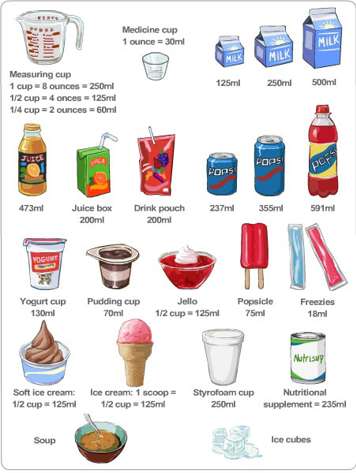Why do I need so much fluid?
After a kidney transplant you will be asked to drink lots of fluids. This is because some of the medications you take can be hard on your kidneys. A transplant kidney needs extra fluid (liquid) to stay healthy and make lots of urine.
Drinking enough fluids:
- prevents you from becoming dehydrated
- controls some of the side effects of your medications
- helps the kidneys remove creatinine (a waste product of the muscles) from the blood.
If you do not drink enough fluids, you will put your transplant kidney under stress. Ask your team how much fluid you should drink every day.
Fluids include all liquids and some food
Fluids include water, milk, tea, juice and pop. Food that is liquid at room temperature also counts as fluid. This includes ice cream, popsicles, freezies, yogurt and soup.
Water should be your main fluid after the transplant, but you may also be allowed small amounts of other, higher-calorie, fluids. The mix of fluids you can take will depend on whether you need to follow any special diet, for example to gain or lose weight. Your dietitian will tell you what fluids you can take for your particular needs.
Measuring fluids
Measure and write down all the fluids you eat or drink over 24 hours. If you are not sure, read labels to find out the number of millilitres (mL) of fluid in the food or drink.

Tips for drinking more fluids
Here are some things you can do to drink more fluids.
- Drink from a big glass or cup.
- Drink from water bottles that hold at least 500 mL.
- Always carry always a water bottle with you.
- Don’t drink only when you feel thirsty; drink fluids throughout the day.
- Make fruits your favourite snack; they contain lots of fluids.
Make sure you know the minimum amount you need to drink every day. Write this amount in the long or short version of your health journal.






